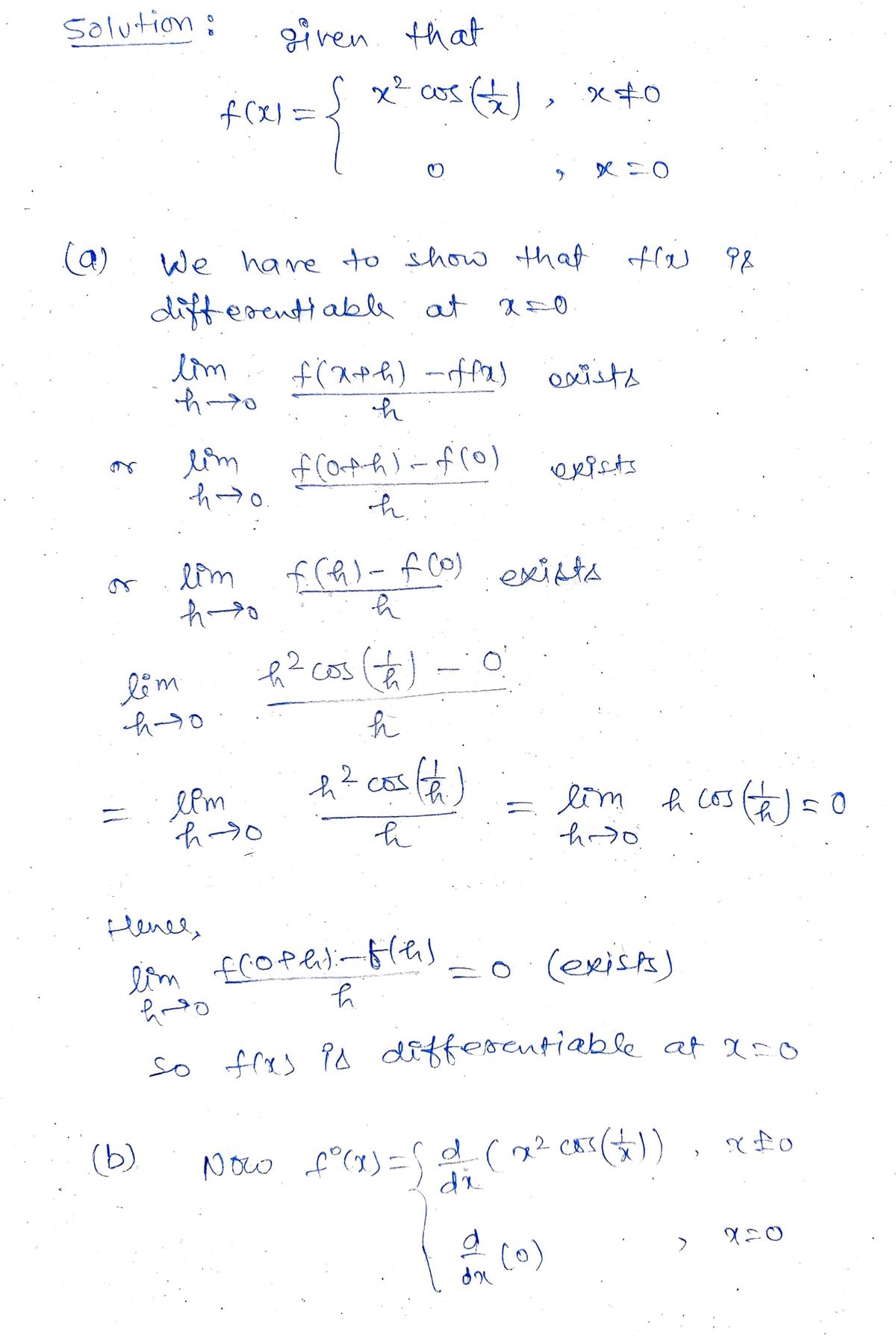4. Even when a function f(x) is differentiable at x = a, its derivative function f(x) can behave oddly near x = a, in the sense that lim f(x) does not exist. Thus, in general, we cannot compute fº(a) by putting x→a into fº(x), which is calculated by formulas for x 6= a. Let f(x) { x² cos Bo X x→a (a) Show that f(x) is differentiable at x = 0. (b) Write down f(x) explicitly for each x. f'(0) # lim f'(x). (c) Show that x-0 if x #0 if x = 0.
4. Even when a function f(x) is differentiable at x = a, its derivative function f(x) can behave oddly near x = a, in the sense that lim f(x) does not exist. Thus, in general, we cannot compute fº(a) by putting x→a into fº(x), which is calculated by formulas for x 6= a. Let f(x) { x² cos Bo X x→a (a) Show that f(x) is differentiable at x = 0. (b) Write down f(x) explicitly for each x. f'(0) # lim f'(x). (c) Show that x-0 if x #0 if x = 0.
Advanced Engineering Mathematics
10th Edition
ISBN:9780470458365
Author:Erwin Kreyszig
Publisher:Erwin Kreyszig
Chapter2: Second-order Linear Odes
Section: Chapter Questions
Problem 1RQ
Related questions
Question

Transcribed Image Text:4. Even when a function f(x) is differentiable at x = a, its derivative function f(x) can
behave oddly near x = a, in the sense that lim f(x) does not exist. Thus, in
general, we cannot compute fo(a) by putting x→a into f(x), which is calculated by
formulas for x 6= a.
Let
f(x)
x² cos
{ (1)
x→a
?? 0
(a) Show that f(x) is differentiable at x = 0.
(b) Write down f(x) explicitly for each x.
f'(0) ‡ lim f'(x).
x→0
(c) Show that
if x #0
if x = 0.
Expert Solution
Step 1: First part

Step by step
Solved in 4 steps with 3 images

Recommended textbooks for you

Advanced Engineering Mathematics
Advanced Math
ISBN:
9780470458365
Author:
Erwin Kreyszig
Publisher:
Wiley, John & Sons, Incorporated

Numerical Methods for Engineers
Advanced Math
ISBN:
9780073397924
Author:
Steven C. Chapra Dr., Raymond P. Canale
Publisher:
McGraw-Hill Education

Introductory Mathematics for Engineering Applicat…
Advanced Math
ISBN:
9781118141809
Author:
Nathan Klingbeil
Publisher:
WILEY

Advanced Engineering Mathematics
Advanced Math
ISBN:
9780470458365
Author:
Erwin Kreyszig
Publisher:
Wiley, John & Sons, Incorporated

Numerical Methods for Engineers
Advanced Math
ISBN:
9780073397924
Author:
Steven C. Chapra Dr., Raymond P. Canale
Publisher:
McGraw-Hill Education

Introductory Mathematics for Engineering Applicat…
Advanced Math
ISBN:
9781118141809
Author:
Nathan Klingbeil
Publisher:
WILEY

Mathematics For Machine Technology
Advanced Math
ISBN:
9781337798310
Author:
Peterson, John.
Publisher:
Cengage Learning,

